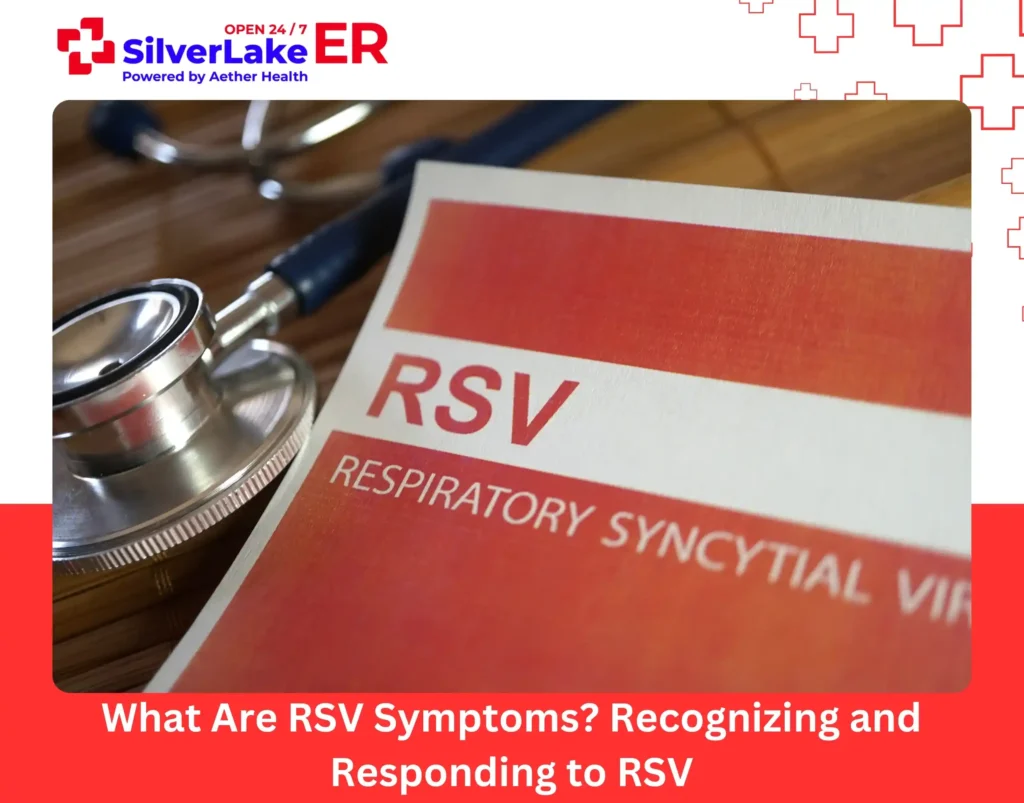No one plans for traumatic injuries. A car accident, workplace injury, or sudden fall can change everything in seconds. The emergency room for trauma care Silver Lake is built to handle those critical moments, with specialized emergency physicians, instant imaging, and life-saving treatments.
Unlike general emergency services, our trauma care focuses on immediate assessment and treatment of injuries that go beyond bumps and bruises. We stabilize patients with severe wounds, fractures, head injuries, and internal trauma and coordinate seamless transfers when surgical intervention is needed.
Let’s explore what trauma care really involves at Silver Lake ER, so you don’t second guess where to go when trauma occurs.
Trauma Care in Silver Lake: Our Trauma Response Process

The trauma care team at Silver Lake ER provides immediate emergency care in your community. Unlike hospital ERs with long wait times, we begin treatment within minutes of your arrival. Here’s what the process looks like:
1. Initial Rapid Assessment
The moment you arrive, our board-certified emergency physicians evaluate your condition. This critical first step involves checking vital signs, assessing breathing and circulation, and quickly identifying life-threatening injuries that require immediate intervention. Our team is trained to recognize trauma patterns and prioritize care based on severity.
2. Advanced Diagnostic Capabilities
Diagnostic imaging forms the foundation of trauma care at Silver Lake. Our facility employs multiple advanced technologies that allow for rapid and accurate diagnosis of traumatic injuries:
- Digital X-rays: Provide high-resolution images of bone fractures, joint dislocations, and foreign bodies
- CT Scanning: Detects internal injuries not visible on X-rays, including brain hemorrhages, organ damage, and complex fractures
- Ultrasound Imaging: For rapid assessment of internal bleeding, soft tissue injuries, and fluid collections without radiation exposure
- Point-of-Care Lab Testing: Delivers blood test results within minutes to identify internal bleeding, infection, and organ damage
These diagnostic capabilities allow our emergency physicians to make informed treatment decisions within minutes of your arrival, avoiding the lengthy delays often experienced at crowded hospital emergency departments.
3. Immediate Stabilization Procedures
Once we’ve identified your injuries, our focus shifts to stabilization. We control bleeding through pressure techniques and specialized wound care. Our team will also establish IV access for fluids and medication administration and immobilize fractures to prevent further damage. Pain management is prioritized throughout this process using appropriate protocols tailored to your specific injuries.
4. Trauma-Specific Treatments
Our emergency team delivers specialized care for various traumatic injuries:
- Expert wound closure using sutures, staples, or adhesives
- Fracture immobilization with proper casting and splinting
- Concussion assessment and management protocols
- Burn treatment with appropriate dressings and pain control
- Joint reduction for certain dislocations
5. Transfer Coordination & Discharge Planning
After providing initial trauma care, our team ensures your treatment continues seamlessly regardless of your next destination:
- For cases requiring specialized intervention: We coordinate efficient transfers to appropriate surgical or specialty facilities based on your specific injuries. Our team prepares complete medical documentation including all diagnostic results and treatments provided.
- For patients ready to return home: You’ll receive detailed discharge instructions including medication guidelines, wound care procedures, activity restrictions, and information on follow-up appointments. We clearly explain warning signs that might indicate complications and provide direct contact information should questions arise.
In both scenarios, our commitment extends beyond your time in our facility. We believe proper coordination of ongoing care is as crucial as the initial emergency treatment.
Common Causes of Trauma Treated at Silver Lake ER

The trauma care team at Silver Lake ER provides immediate care for traumatic injuries from various sources. Our emergency physicians are equipped to treat trauma resulting from:
Vehicle & Transportation Accidents
Car crashes, motorcycle collisions, and bicycle accidents frequently cause multiple trauma types. These high-impact events often result in fractures, lacerations, concussions, and internal injuries that require our advanced diagnostic imaging and immediate treatment protocols.
Falls & Workplace Incidents
Falls from heights, workplace accidents, and home injuries account for many trauma cases we treat. These incidents commonly cause broken bones, joint dislocations, head injuries, and deep lacerations that benefit from our rapid assessment and expert emergency care.
Violence
Physical assault, domestic violence, or other forms of intentional harm frequently result in traumatic injuries requiring specialized care. The team at Silver Lake ER is trained to address both the physical and emotional aspects of these traumatic experiences.
Home & Recreational Injuries
Accidents occurring during everyday activities or recreational pursuits frequently require emergency trauma care. From kitchen mishaps causing deep cuts to DIY projects resulting in penetrating injuries, our team handles these common but potentially serious traumas efficiently.
Natural Disasters
Events such as hurricanes, earthquakes, or floods, all too familiar to Texas residents can cause trauma due to the devastation and loss they bring. Silver Lake ER serves as a critical community resource during these challenging times.
When to Seek Trauma Care at Silver Lake ER
Delaying proper care after a traumatic event can increase complication risks and extend recovery times. Seek immediate trauma care at Silver Lake ER when you experience:
- Injuries from vehicle accidents, falls, or other high-impact events
- Deep wounds requiring sutures or showing signs of infection
- Burns beyond minor first-degree injuries
- Suspected bone fractures or dislocations
- Head injuries, especially with loss of consciousness or confusion
- Chest pain or difficulty breathing following an injury
- Abdominal pain or blood in urine after trauma
- Persistent emotional distress following a traumatic event
Trust your instincts. If an injury seems severe or different from anything you’ve experienced before, it warrants professional evaluation.
Silver Lake ER: Your Emergency Partner in Trauma Care

Aether Health – Silver Lake ER sits just minutes from your neighborhood. This proximity saves precious time when traumatic events happen. Our facility eliminates typical hospital bottlenecks: no triage delays, no waiting behind non-emergency cases, no searching for available physicians.
Most patients see our board-certified emergency doctors within minutes of arrival. Our trauma team handles fractures, lacerations, burns, and concussions with the same standards as hospital ERs, but without the wait. We stand ready 24/7, delivering expert trauma care precisely when you need it.
[Seek Emergency Trauma Care Now]
FAQs
1. How do you self care for trauma?
Rest, manage pain with over-the-counter meds, and seek emotional support. Follow up with a doctor to monitor healing and prevent complications.
2. What are the three types of physical trauma?
Blunt force trauma (falls, collisions), penetrating trauma (cuts, punctures), and thermal trauma (burns, frostbite) are the three primary physical trauma categories. Each type varies in severity and may affect different body systems.
3. What is the purpose of trauma care?
Trauma care aims to stabilize patients, prevent complications, treat life-threatening injuries, and create a foundation for complete recovery.
4. What is the “golden hour” principle of trauma care?
The “golden hour” principle emphasizes that treatment within the first 60 minutes after injury significantly improves survival rates and recovery outcomes.
5. How to control pain mentally?
Deep breathing, guided imagery, distraction techniques, and mindfulness can help manage pain perception by interrupting pain signals to the brain.
6. What is the fastest way to heal trauma?
Prompt professional medical care, followed by adequate rest, proper nutrition, and following all treatment instructions accelerates healing from traumatic injuries. The fastest recoveries happen when the body and mind are both cared for intentionally.




